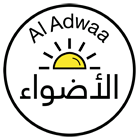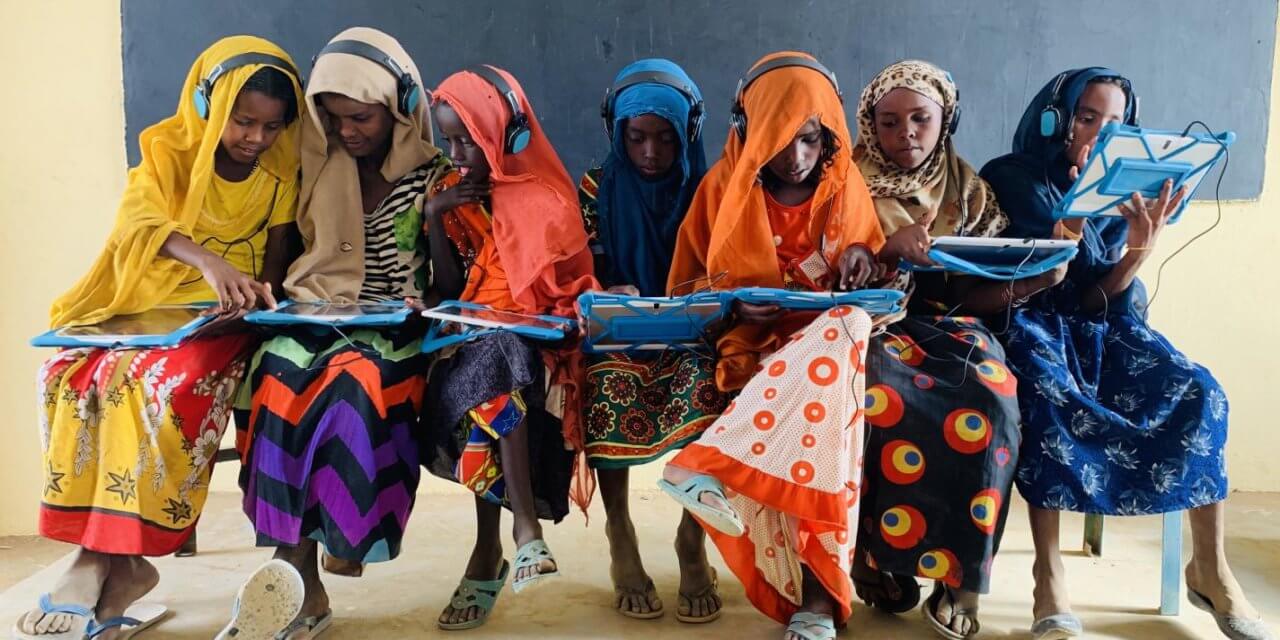Schoolgirls in Kassala learning with tablets. © UNICEF | Florine Bos
For the last 30 years, Sudan’s education system suffered a significant decline, both in terms of infrastructure and the quality of education itself. The transitional government promised to transform the education system.
From 1956, when Sudan gained its independence, to 1969, education was free for all children. However, attending school was not compulsory, and the classroom seats were limited. Consequently, Sudan’s authorities focused on increasing the number of educational facilities across the country.
General education was initially divided into three stages of four years each: primary, middle and secondary school. In 1970, under General Jaafar Nimeiri‘s government (1969-1985), primary education was extended to six years; middle and secondary school remained three years.
Although the expansion of schools and changes to the nationalised curricula had, at times, negative impacts on the quality of education, Sudan’s public education system was in relatively good shape. Moreover, private education began in the 1950s and saw a significant boom.
Shortly after taking power in 1989, Omar al-Bashir’s government decided to Arabise all subjects and Islamise the schools, backed by the leaders of the Muslim Brotherhood and Islamic teachers and administrators, who were the strongest supporters of the regime.
“Education took a knockout in 1989 with the Islamic Movement coming to power.“
Dr Asmaa Jumaa
While steadily increasing taxes on private schools, the government’s annual budgets for public education were meagre. In 2017, for example, the total spending allocated to education amounted to less than 1 percent of the overall public spending in contrast to 42 percent of public spending allocated to security and defence.
Education under Bashir’s rule suffered a significant decline, or as the social researcher Dr Asmaa Jumaa says, “Education took a knockout in 1989 with the Islamic Movement coming to power“. However, Dr Jumaa adds, “by then it was already deteriorating from wrong policies and fruitless methods that led to increased rates of school dropouts”.
The United Nations Children’s Fund (UNICEF) estimates that over three million children in Sudan, aged 5-13 years, are not in the classroom. Seventy-six percent of primary age children attend school; in secondary, that figure dips to 28 percent.
Moving backwards
“Education for children became the responsibility of parents rather than the state. When it was strong and supported by the state, students graduated with real knowledge, and they were fully qualified unlike nowadays,” says Musa Alzubair, a long-time teacher based in Khartoum North.
Teachers were affected, as well. Many qualified teachers left the country due to the economic situation, and others lost their job for political reasons under al-Bashir’s regime.
Many of the current teachers aren’t qualified. Educated by the same weak education system, they haven’t gone through proper teacher training. Some have no teacher qualification at all and only became teachers because they couldn’t find any other job.
In South and East Darfur, for example, the Ministry of Education identified 3,692 unqualified teachers out of a total number of 7,315 employed teachers, according to UNICEF Sudan. Many teachers in Sudan were found to be untrained, under supervised and unequally distributed between rural and urban areas.
Besides the economic challenges and the lack of qualified teachers, the methods and tools of teaching in Sudan are outdated. “The ways of teaching, the curriculums and subjects aren’t keeping up with modern technology and means, in addition to the lack of activities such as sports, literature and school clubs,” Alzubair told AlAdwaa.Online.
“Education for children became the responsibility of parents rather than the state.”
Musa Alzubair
In regions affected by violent conflict and remote areas, the situation is even worse. Local and international organisations tried for years to help, for example, displaced people in and outside the camps across Sudan. They establish temporary schools that teach children in the age of mandatory education.
“UNICEF and other organisations provide education in crises. There’s a school curriculum developed by UNICEF in cooperation with the Ministry of Education. It covers the first three grades of elementary education”, says Abdulmuhsin Abdulmutaal, an employee of an organisation operating in Darfur.
Given the fall of Bashir’s regime in April 2019 and the formation of Sudan’s transitional government in September 2019, people’s hopes for real changes – ranging from achieving peace, fixing the economy to providing essential services to the people – are high.
Education is on top of the priority list, according to Mohamed el-Ameen el-Toom, Sudan’s Minister of Education, but the country has yet to relearn how to educate.
Little change
El-Toom said that the transitional government acknowledges that many children aged 6-13 years are out of school, educational opportunities aren’t equally distributed between cities and rural areas, and illiteracy rates are still tragically high.
The minister stated that they would carry out several reforms to bring the glory of education back, restore respect to the teachers and build a strong system. His promise includes free admission for children aged 6 to the first grade of elementary school as a starter in the government’s strategy to provide full free education to all students by 2030 and to achieve the Sustainable Development Goal concerning inclusive and equitable quality education.
Mohamed Toum, a teacher, told AlAdwaa.Online that not much has changed since the transitional government took over, and it is hard to see the transition on the ground. However, some changes have come through. “The ministry is starting to establish an electronic database for all the schools. They requested updated CVs from all teachers, completed files of the principals and school owners, in addition to other documents to be submitted. That is regarding the private sector which has plenty of issues,” explains Toum.
“For the public schools, to cut the unnecessary expenses, the ministry ordered each school to prepare and print their exams instead of the unified exams in the old system. In addition to that, and since teachers in government schools must not spend too many years in one school, the new orders set the period of teaching in each school for two years, then the teacher must move to the next,” Toum adds.
“The ministry needs to plan well and put their words into action.”
Dr Asmaa Jumaa
“The transitional government has a difficult task to rebuild the education system from scratch, and since the government was formed almost at the middle of the current school year, not much has changed so far,” Dr Jumaa says. However, “the government does have a good vision that will be implemented next year. I expect that next year we will witness transformation in education, and by the end of the transitional period it would be in good shape”, Dr Jumaa adds.
“All the changes in the education sector need to be thoroughly studied and reviewed, and since the government wants to restore the old educational ladder, change the curriculums and achieve a breakthrough in fixing the system’s issue, they need resources and a decent budget to do so. The ministry needs to plan well and put their words into action,” Dr Jumaa says.
While UNICEF says that on some measures Sudan has recorded steady progress in education, from an increase in primary school attendance to gender parity in primary classrooms, it is clear that much work remains to be done – yet another mammoth task for Sudan’s transitional government and its partners.

